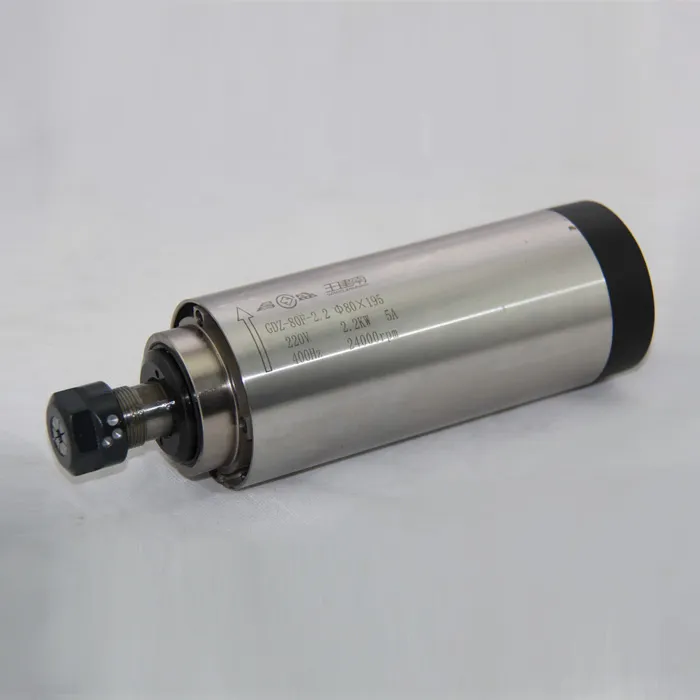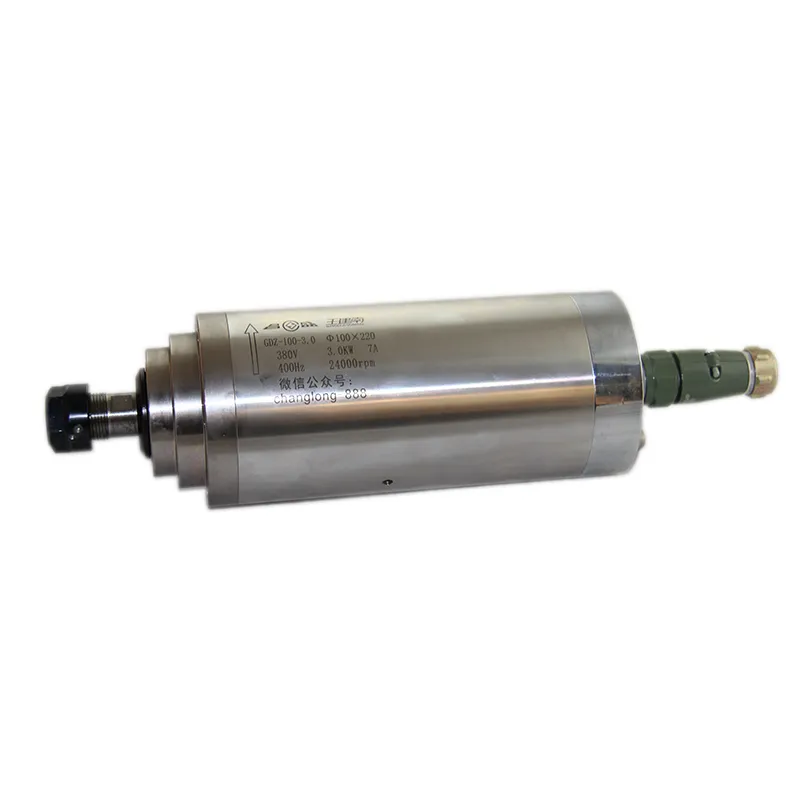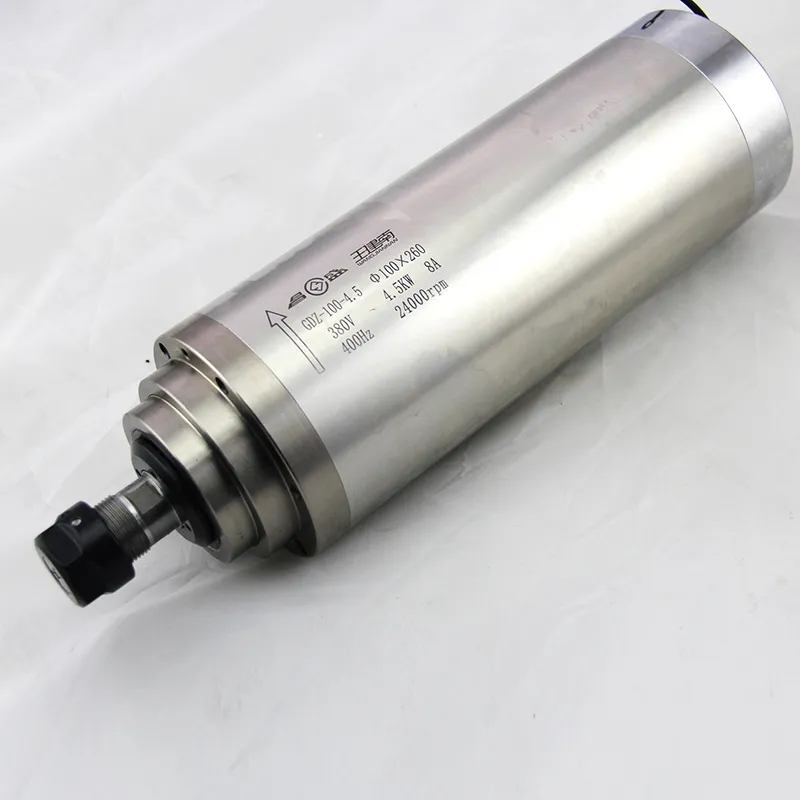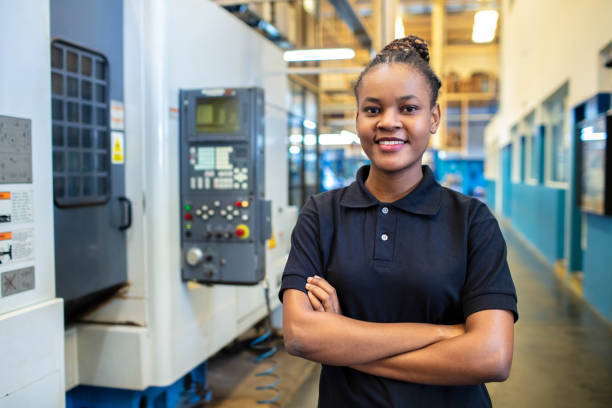How a CNC Milling Machine Works
CNC milling machines are the workhorses of modern manufacturing. These clever devices can create complex parts with incredible accuracy, transforming raw materials into finished products with precision and efficiency. But have you ever wondered exactly how a CNC milling machine works its magic? Let’s dive in and explore the fascinating world of CNC milling!
The Basics of CNC Milling
CNC milling is a type of machining process that uses computer-controlled cutting tools to remove material from a workpiece. The term “CNC” stands for Computer Numerical Control, which means that the machine’s movements are directed by a computer program. This allows for incredibly precise and repeatable cuts, making CNC milling ideal for creating complex parts.
At its core, a CNC milling machine works by spinning a cutting tool at high speeds while moving it along multiple axes. The cutting tool, usually an end mill or face mill, removes material from the workpiece bit by bit, gradually shaping it into the desired form. It’s like sculpting, but with extreme precision and speed!
Key Components of a CNC Milling Machine
To understand how a CNC milling machine works, let’s break down its main parts:
- Machine Base and Frame: This provides stability and supports all other components.
- Worktable: Where the workpiece is secured.
- Spindle: Holds and rotates the cutting tool.
- Cutting Tools: Various types of mills and drills that actually cut the material.
- Axes: Allow movement in different directions (typically X, Y, and Z).
- Motors: Drive the movement of the axes and spindle.
- Control System: The computer and software that direct the machine’s operations.
- Coolant System: Helps manage heat and remove chips during cutting.
One of the most crucial components is the spindle. High-quality spindles, like the 2.2KW ER20 Air-Cooled Spindle, are essential for achieving precise and efficient milling operations.

A powerful 2.2KW ER20 Air-Cooled Spindle for CNC milling machines
The CNC Milling Process: Step by Step
Now that we know the parts, let’s walk through how a CNC milling machine actually works:
- Design: First, a 3D model of the desired part is created using Computer-Aided Design (CAD) software.
- Programming: The CAD model is then converted into a set of instructions (G-code) that the CNC machine can understand. This is done using Computer-Aided Manufacturing (CAM) software.
- Setup: The workpiece is securely fastened to the machine’s worktable, and the appropriate cutting tools are loaded into the tool magazine.
- Zeroing: The machine establishes reference points, ensuring it knows exactly where the workpiece is located.
- Machining: The CNC controller executes the G-code, directing the spindle and cutting tools to remove material from the workpiece. This often happens in stages, with roughing cuts followed by finishing cuts.
- Inspection: Once machining is complete, the part is typically inspected to ensure it meets specifications.
Throughout this process, the spindle plays a crucial role. For instance, a 24000RPM 3KW ER20 Water-Cooled Spindle can provide the high speeds and power needed for efficient material removal.

A high-speed 24000RPM 3KW ER20 Water-Cooled Spindle for advanced milling operations
Types of CNC Milling Machines
CNC milling machines come in various configurations, each suited for different types of work:
- Vertical Milling Machines: The spindle axis is vertically oriented. These are versatile and commonly used for general machining tasks.
- Horizontal Milling Machines: The spindle is horizontal, making them ideal for heavy-duty cutting and long workpieces.
- 5-Axis Milling Machines: These can move the cutting tool or workpiece in five different axes, allowing for extremely complex shapes to be machined.
- Bed Mills: The table moves back and forth and side to side, while the spindle moves up and down.
- Gantry Mills: The spindle moves across a fixed table, useful for very large workpieces.
The choice of machine depends on the specific requirements of the job. For instance, a 3.5KW ER20 Air-Cooled Spindle might be ideal for a vertical milling machine used in high-speed machining applications.
The Role of Computer Control in CNC Milling
The “NC” in CNC stands for Numerical Control, and it’s what sets these machines apart from their manual counterparts. Here’s how computer control works in CNC milling:
- G-code Interpretation: The CNC controller reads and interprets the G-code instructions.
- Motion Control: The controller sends signals to the motors that drive the machine’s axes and spindle.
- Feedback Systems: Sensors provide real-time feedback on the position and speed of various components, allowing for precise control.
- Tool Management: The controller keeps track of tool wear and can automatically change tools when needed.
- Adaptive Control: Advanced systems can adjust cutting parameters on the fly based on feedback from the machining process.
This level of control allows CNC milling machines to produce parts with incredible accuracy and repeatability. It’s not uncommon for these machines to achieve tolerances of a few thousandths of an inch!
Cutting Tools and Tool Holders in CNC Milling
The cutting tools used in CNC milling are crucial to the machining process. There are many types, each designed for specific operations:
- End Mills: Versatile tools used for cutting slots, pockets, and contours.
- Face Mills: Used for creating flat surfaces.
- Ball Nose Cutters: Ideal for 3D contours and curved surfaces.
- Drill Bits: For creating holes.
- Boring Tools: Used to enlarge and finish holes with precision.
Tool holders secure these cutting tools to the spindle. The choice of tool holder can significantly impact machining performance. For example, an ER20 collet system provides excellent grip and runout control, which is crucial for precise milling operations.
The Importance of Spindle Selection in CNC Milling
The spindle is often called the heart of a CNC milling machine, and for good reason. It’s responsible for rotating the cutting tool at high speeds, typically ranging from 1,000 to 30,000 RPM or more. The choice of spindle can significantly impact the machine’s capabilities and the quality of the finished parts.
Key factors to consider when selecting a spindle include:
- Power Output: Determines the machine’s ability to cut through tough materials.
- Maximum Speed: Higher speeds generally allow for faster material removal and better surface finishes.
- Torque: Important for heavy cutting operations, especially at lower speeds.
- Cooling Method: Air-cooled spindles are simpler, while water-cooled spindles can handle higher loads.
- Tool Interface: Affects tool changing speed and accuracy.
For example, a 24000RPM 4.5KW ER20 Water-Cooled Spindle offers a balance of high speed and power, making it suitable for a wide range of milling applications.

A high-performance 24000RPM 4.5KW ER20 Water-Cooled Spindle for demanding milling tasks
Work Holding in CNC Milling
Securing the workpiece properly is crucial for accurate machining. Common work holding methods include:
- Vises: Ideal for smaller parts with regular shapes.
- Clamps: Used for larger or irregularly shaped workpieces.
- Vacuum Tables: Great for thin materials or large sheets.
- Magnetic Chucks: Used for ferrous materials.
- Custom Fixtures: Designed for specific parts or high-volume production.
The choice of work holding method depends on the workpiece material, size, and the complexity of the milling operation.
CNC Milling Machine Programming
Programming a CNC milling machine involves several steps:
- CAD Modeling: Creating a 3D model of the part.
- CAM Processing: Generating toolpaths based on the CAD model.
- Post-Processing: Converting the toolpaths into machine-specific G-code.
- Simulation: Virtually testing the program to check for errors.
- Optimization: Fine-tuning the program for efficiency and quality.
Modern CNC controllers offer features like:
- Conversational Programming: Allows operators to create simple programs directly on the machine.
- Tool Path Visualization: Helps operators verify programs before running them.
- Adaptive Feed Control: Automatically adjusts cutting parameters for optimal performance.
Applications of CNC Milling Machines
CNC milling machines are used in a wide variety of industries, including:
- Aerospace: Creating complex, lightweight components for aircraft and spacecraft.
- Automotive: Manufacturing engine parts, molds for body panels, and prototypes.
- Medical: Producing implants, surgical instruments, and custom prosthetics.
- Electronics: Milling circuit boards and creating molds for electronic components.
- Mold and Die Making: Creating tools for injection molding and stamping.
- General Manufacturing: Producing a wide range of precision parts for various industries.
The versatility of CNC milling allows for the production of parts with intricate geometries and tight tolerances that would be impossible or impractical to achieve with manual machining methods.
Advantages of CNC Milling
CNC milling offers several advantages over traditional machining methods:
- Precision: Can achieve tolerances of a few thousandths of an inch.
- Repeatability: Produces identical parts consistently.
- Complexity: Can create complex 3D shapes and features.
- Efficiency: Faster production times, especially for complex parts.
- Flexibility: Easy to switch between different parts or make design changes.
- Reduced Waste: Optimized toolpaths minimize material waste.
- Safety: Reduces the need for manual intervention in dangerous cutting operations.
These benefits have made CNC milling a cornerstone of modern manufacturing.
Challenges in CNC Milling
Despite its many advantages, CNC milling also presents some challenges:
- High Initial Cost: CNC milling machines and their associated software can be expensive.
- Skill Requirements: Operators need training in CAD/CAM software and machine operation.
- Maintenance: Regular maintenance is crucial to keep the machine running accurately.
- Programming Complexity: Creating efficient programs for complex parts can be challenging.
- Material Limitations: Some materials are difficult to machine, requiring specialized tools or techniques.
Overcoming these challenges often requires investment in training and high-quality equipment, such as robust spindles and cutting tools.
Future Trends in CNC Milling
The field of CNC milling continues to evolve, with several exciting trends on the horizon:
- Hybrid Manufacturing: Combining additive and subtractive processes in a single machine.
- Artificial Intelligence: Using AI for optimizing toolpaths and predicting maintenance needs.
- Internet of Things (IoT): Connecting machines for remote monitoring and data analysis.
- Sustainability: Developing more energy-efficient machines and processes.
- Multi-Task Machines: Integrating milling with turning and other processes for complete part production.
These advancements promise to make CNC milling even more efficient and versatile in the future.
Maintenance and Troubleshooting of CNC Milling Machines
Proper maintenance is crucial for ensuring the longevity and performance of CNC milling machines. Regular tasks include:
- Lubrication of moving parts
- Checking and replacing worn cutting tools
- Cleaning and calibrating the machine
- Inspecting electrical connections
- Updating software and firmware
When problems arise, systematic troubleshooting approaches help identify and resolve issues quickly, minimizing downtime.
Safety Considerations in CNC Milling
Safety is paramount in CNC milling operations. Key safety measures include:
- Proper training for operators
- Use of safety guards and emergency stop systems
- Wearing appropriate personal protective equipment
- Following proper procedures for tool changes and workpiece setup
- Regular safety inspections and maintenance
Adhering to these safety practices helps prevent accidents and ensures a safe working environment.
FAQs
1. What is the difference between CNC milling and CNC turning?
CNC milling uses rotating cutting tools to remove material from a stationary workpiece, while CNC turning rotates the workpiece against a stationary cutting tool. Milling is typically used for creating complex 3D shapes, while turning is ideal for cylindrical parts.
2. How does the spindle speed affect the milling process?
Spindle speed affects cutting performance, surface finish, and tool life. Higher speeds generally allow for faster material removal and better surface finishes but may increase tool wear. The optimal speed depends on factors like material properties, tool geometry, and desired finish.
3. Can CNC milling machines work with all types of materials?
CNC milling machines can work with a wide range of materials, including metals, plastics, wood, and composites. However, different materials require specific cutting tools, speeds, and feeds for optimal results. Some very hard or very soft materials may require specialized equipment or techniques.
4. How often should I replace the cutting tools in my CNC milling machine?
Tool replacement frequency depends on factors like material hardness, cutting parameters, and tool quality. Monitoring tool wear and surface finish quality helps determine when replacement is necessary. Some tools may last for hundreds of parts, while others may need replacement after just a few operations.
5. What is the role of coolant in CNC milling?
Coolant helps dissipate heat, remove chips, and lubricate the cutting zone. It plays a crucial role in extending tool life, improving surface finish, and allowing for higher cutting speeds. Different types of coolant are used depending on the material and milling operation.
6. How does 5-axis milling differ from 3-axis milling?
5-axis milling allows the cutting tool to move along five different axes simultaneously, enabling the creation of more complex geometries and reducing the need for multiple setups. 3-axis milling is limited to movement along the X, Y, and Z axes, making it suitable for simpler parts but often requiring multiple setups for complex geometries.
Conclusion
CNC milling machines are marvels of modern engineering, combining precision mechanics with advanced computer control to create complex parts with incredible accuracy. From the high-speed spindle that drives the cutting tool to the sophisticated software that guides its movements, every aspect of a CNC milling machine is designed for efficiency and precision.
Understanding how these machines work is key to harnessing their full potential. Whether you’re a machinist, an engineer, or simply curious about manufacturing technology, the world of CNC milling offers a fascinating glimpse into the intersection of computer science and mechanical engineering.
As technology continues to advance, CNC milling machines will undoubtedly become even more capable and efficient. The future of manufacturing is bright, and CNC milling will certainly play a crucial role in shaping that future. So the next time you see a precisely machined part, take a moment to appreciate the incredible technology and skill that went into creating it!

